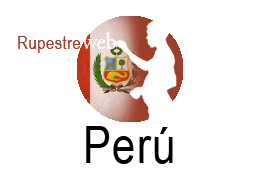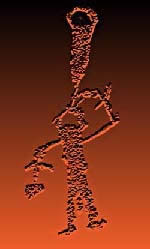 Trophy’ heads in the rock art of the Majes Valley, Perú: exploring their possible origin
Trophy’ heads in the rock art of the Majes Valley, Perú: exploring their possible origin
Maarten van Hoek rockart@home.nl
INTRODUCTION
The Andean physical world is one of the most restless and active areas on earth. Earthquakes, volcanic eruptions, landslides, tidal waves, El Nino’s, extreme droughts and floods repeatedly confronted Andean societies with chaos and mortality. Thus it will be no surprise that the main concern of the many prehistoric societies of the Desert Andes was to survive in such a harsh and hostile environment. As a consequence many activities, both secular and sacred, revolved around providing for adequate food and sufficient water as well as appeasing the spiritual powers that controlled the fierce forces of nature. However, the natural world also supplied an abundance of seafood and fertile land and it is this strongly contrasting dualism of positive properties and negative forces that shaped the worldview and religious beliefs of almost every pre-Columbian Andean society. Dualism became one of the basic tenets of Andean worldview; an important concept which centred on maintaining the cosmic equilibrium. As the concept of ‘essence over appearance’ is another basic tenet of Andean worldview, many rituals, practices and symbols of the Andean world conveying this reciprocity, often are expressed so subtly that the full meaning will escape the uninitiated. Importantly, reciprocity is a feature of corporate worldview: one concept is countered by and connected to another and thus a symbol often has a double reading.
One of the most intriguing examples of the double reading concerns the symbolic use of the so called ‘trophy’ head. The practice of acquiring heads of humans for several reasons is known to have occurred in a large part of South America and is also known in many prehistoric Andean societies. Head ‘hunting’ is known as early as the Preceramic Epoch (Proulx 1999). There are several theories regarding the provenance of the ‘trophy’ head. It has been comprehensively and convincingly argued that heads were separated from enemy bodies during warfare and then displayed as evidence of the warrior’s prowess (Proulx 1999). On the other hand, Guillén has argued that the ‘trophy’ heads were not obtained in battle, but were the mummified heads of relatives, carefully prepared, and used in ancestor worship (cited in Browne, Silverman and García 1993: 276). Recently, a distant ‘warfare’ theory has been contradicted by the results of a scientific study. Using tooth enamel from ‘trophy’ head skulls, researchers tested for a variety of isotopes that would tell them where these humans likely lived and what they ate. They then compared those findings with isotope data from bodies of individuals buried at Nasca sites. The findings show that both the ‘trophy’ heads and the bodies came from the same region and that the majority of these ‘trophy’ heads were not the product of long distance war expeditions (Ahmed 2009). These recent results actually confirm the hypothesis by Proulx (2001: 6) who clearly stated that “it seems most likely that the various Nasca chiefdoms were fighting amongst themselves …”.
Importantly however, Proulx (2001: 8) emphasises that the primary function of the heads was their use in rituals and, most importantly, that ‘trophy’ heads were symbolic of, or a metaphor for, regeneration and rebirth as well as offerings to the spiritual forces. This complex of beliefs clearly expresses the concept of dualism in Andean world view: death (negative) and rebirth (positive) are intimately forged into one powerful symbolic ‘object’, the trophy head.
In this paper I place the word ‘trophy’ between inverted commas because it is often uncertain if all the examples of petroglyphs of ‘trophy’ heads that I will discuss indeed represent ‘trophy’ heads, whether acquired in warfare or not. It must also be emphasised here that - throughout this paper - I use my own numbering of petroglyph boulders and panels since there does not exist any published survey of rock art sites of the Majes Valley (and of many other sites in Peru and Chile) that presents a full inventory in which all the petroglyph boulders and/or panels have been numbered. An exception is the excellent survey by Dr. Ana Nieves (2007) of the Lower Nasca Valley in Peru.
At Toro Muerto, the most important petroglyph site in the Majes Valley and in Peru, I documented more than 1000 individual boulders (altogether about 1500 panels) and I assigned these boulders and their panels an individual number and area code. Thus boulder Bb-009B is located in Area ‘B’, Section ‘b’, and panel ‘B” of Boulder 009 will be discussed in this paper. The exact location of most of these boulders has been pinpointed by me with the aid of Google Earth. However, I will not reveal the exact location of these boulders in order to avoid vandalism and/or robbery (see Appendix). I used a similar numbering system for many other petroglyph sites in Peru and Chile, while in this paper I sometimes refer to the numbering information from other researchers. When the (exact) location of a petroglyph boulder is not known to me, this will be mentioned in the text or caption, or I will refer to the publication in which it appears.
1.1 - DISTRIBUTION OF ‘TROPHY’ HEADS IN DESERT ANDES ROCK ART
There is ample archaeological substantiation for rituals involving ‘trophy’ heads in many Andean cultures. Evidence involving ‘trophy’ heads is known from Sechín and Chavín to Wari and Inca. It is remarkable however that most publications about Andean ‘trophy’ heads hardly ever describe examples of ‘trophy’ heads from the enormous repertoire of rock art that exists in the coastal deserts of Peru and Chile. An exception is the book by Silverman and Proulx who briefly mention the rock art in the Palpa Valley and include a photograph of the major petroglyph panel (VIU-001) at La Viuda (Silverman & Proulx 2002: Fig. 7.4). Surprisingly however, depictions of ‘trophy’ heads are relatively scarce in the rock art of the Desert Andes.
1.1.1 - NORTHERN PERU
Numerous images of decapitated heads and ‘trophy’ heads appear in the gruesome friezes of the temple walls of Cerro Sechín near the town of Casma and the Huaca de la Luna near Trujillo, both in the north of Peru. Yet, in a large area around these ceremonial centres only very few unequivocal depictions of ‘trophy’ heads occur in rock art. The best, unambiguous example, known to me in the rock art of coastal, northern Peru (Campana 2006; Campana 2009: pers. comm.) is found on panel ALT-069 (Figure 20) at Alto de la Guitarra in the Río Virú drainage, while Núñez Jiménez suggested a petroglyph at Alto de la Guitarra to represent a ‘trophy’ head (1986: Fig. 667). Other (possible) examples that have been published are a Chavín-style ‘trophy’ head carrier at Ama II in the Río Santa drainage (Hostnig 2003: 15), a rock painting of a possible ‘trophy’ head carrier at Pintashgamacay (Chiurazzi 2006) and a questionable example at El Vagón in the Río Moche drainage (Núñez Jiménez 1986: Fig. 557). A possible ‘trophy’ head, but not regarded as such by Pimentel (1986: Fig. 51G), appears on Rock 22 at Montegrande in the Jequetepeque Valley. Núñez Jiménez also reports two ‘trophy’ head petroglyphs at Palamenco in the Lacramarca Valley. However, the example suggested to be on Piedra 25 (1986: 975) is definitely not a ‘trophy’ head, while the other - on Piedra 114 (1986: Fig. 1085) - has almost completely weathered off, if indeed it ever existed, and cannot be recognised as a ‘trophy’ head carrier anymore.
1.1.2 - SOUTHERN PERU
It is the Nasca Culture (and to a lesser extent the preceding Paracas Culture) of coastal southern Peru that yielded the richest collection of trophy head skulls and imagery depicting ‘trophy’ heads. Although numerous trophy head skulls and a very rich collection of ceramics depicting ‘trophy’ heads from the Nasca Culture have been recorded, it is again remarkable that relatively few ‘trophy’ heads appear in the rock art within influence sphere of the Paracas-Nasca Cultures. For instance, one of the richest collections of ‘trophy’ head skulls has been discovered at the Cerro Carapo archaeological site in the Palpa Valley of the Nasca drainage where a cache of no less than 48 skulls was unearthed (Browne, Silverman and García 1993). Cerro Carapo is only 8 km SSW of the important petroglyph site of Chichitarra where perhaps nine ‘trophy’ heads have been reported (including some ambiguous examples). At the La Viuda site panel VIU-001A (only 5 km NNE of Cerro Carapo) a ‘seated’ anthropomorph may have a ‘trophy’ head in his or her hand. I will return to this anthropomorph (Figure 10) later. Moreover, the comprehensive survey of the Nasca Valley by Ana Nieves (2007) yielded a number of petroglyphs possibly depicting ‘trophy’ heads. At Hacienda Jumana 1 (Nieves 2007: RN23 - Rock 2) an anthropomorphic petroglyph seems to hold a (‘trophy’?) head in the raised left hand. On five panels/boulders in the Quebrada Cangana Majuelos are six possible depictions of ‘trophy’ heads (Nieves 2007: QMA01-B-C and H; QMC14-B and C). These sites are only 8 to 14 km W-NW of the large Nasca ceremonial centre of Cahuachi on the River Nasca. The major petroglyph site of Huancor, located 178 km NNW of Cahuachi, located at the fringe of the Nasca influence sphere, but within the Paracas influence zone, has at least 228 petroglyph panels and only two, perhaps four, panels involve the depiction of a biomorph carrying a ‘trophy’ head.
Altogether I was able to find about 21 (possible) examples of petroglyphs of ‘trophy’ heads in the Paracas-Nasca cultural zone; an area of more than 30.000 km2 with numerous rock art sites. Surprisingly however, the area with the richest collection of ‘trophy’ heads in rock art is not found in the Nasca drainage (where 16 examples occur), but in the Majes Valley, located about 325 km to the SE of Cahuachi, allegedly well outside the direct influence spheres of the Paracas-Nasca Cultures. Altogether the Majes Valley, an area of only about 1000 km2, yielded twice as much examples of petroglyphs (possibly) depicting ‘trophy’ heads. This large group of ‘trophy’ head petroglyphs will be discussed in more detail and - when necessary - will be compared with examples outside the Majes Valley, especially the Nasca drainage.
2.1-TYPES OF ‘TROPHY’ HEADS IN THE ROCK ART OF THE MAJES VALLEY
The Majes Valley (the stretch of 93 km from Camaná on the Pacific coast to Andamayo in the north) not only houses the largest collection of rock art sites known to exist in one single river valley in Peru (23 individual sites are known to me to have been recorded up to 2010), but also two of the largest rock art sites of the Desert Andes: Toro Muerto (which is said to have more than 5000 petroglyph boulders) and Alto de Pitis (with about 300 petroglyph boulders). The locations of the most relevant petroglyph sites in and around the Majes Valley have been indicated in Figure 1.
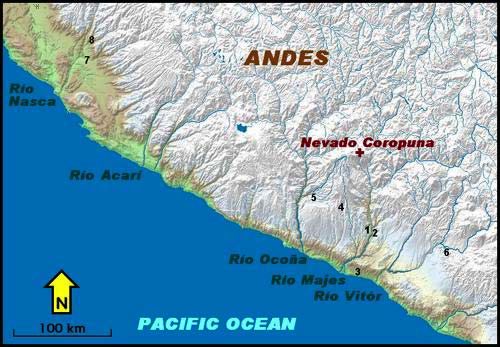
Figure 1. General locations of the major petroglyph sites mentioned in this paper.
1 = Toro Muerto; 2 = Alto de Pitis; 3 = Cerro Pano; 4 = Illomas; 5 = Chillihuay;
6 = La Caldera; 7 = Lower Río Nasca; 8 = Palpa Valley. Map compiled by Maarten van Hoek.
The iconography of these two major (and other) petroglyph sites in the Majes Valley is more or less the same, although there are a few notable differences that will not be discussed here. What both sites also have in common is - in my opinion (see also Van Hoek 2003: 169) - a very strong emphasis on depictions symbolising death and mortality. Both sites have several petroglyphs of ‘mummy bundles’, of ‘skeleton’ anthropomorphs and indeed of ‘trophy’ heads. Also at Cerro Pano, a petroglyph site on the coast - east of Camaná - but not actually located in the Río Majes drainage, possible ‘trophy’ head petroglyphs have been recorded. Altogether I could find records of 36 (possible) ‘trophy’ heads in the rock art repertoire of the Majes Valley (including the three Cerro Pano examples see Appendix).
The ‘trophy’ heads of the Majes Valley appear in four different contexts. First there are ‘trophy’ heads that are carried by an anthropomorphic figure. Second there are ‘trophy’ heads that are directly associated with zoomorphic figures. A third (special but limited) group is formed by petroglyphs that seem to involve scenes in which a ‘trophy’ head is disputed by two zoomorphic figures. The most problematic group concerns the isolated ‘trophy’ head. All four types will be discussed in detail. These examples are compared with the depictions of ‘trophy’ heads outside the Majes Valley. Especially the possibility of Paracas-Nasca influence in the Majes Valley and surrounding area will be explored.
3.1.1 - ‘TROPHY’ HEADS CARRIED BY ANTHROPOMORPHIC FIGURES
In the Majes Valley there are three petroglyphs of anthropomorphs that seem to carry a ‘trophy’ head and all are found at Toro Muerto. Furthermore, a number of doubtful examples will be discussed. The best known petroglyph of a definite ‘trophy’ head carrier in the Majes Valley occurs on panel Da-032 at Toro Muerto. A black-and-white drawing of that figure appears in Núñez Jiménez (1986: Fig. 2304), while exactly the same drawing appears in several publications by Linares Málaga (for example 1999: Esq. 44). It is still obscure to me who originally made that drawing.
The ‘trophy’ head carrier on panel Da-032 (Figure 2) is part of a much larger collection of images that - unfortunately - is not shown in any of the publications that I have available. Drawing 2304 in the book of Núñez Jiménez (1986) shows the isolated, outlined anthropomorph in frontal view with the left arm in a ‘saluting’ position and an empty left hand. From the right hand runs a line (a carrying rope?) that is attached to a circular human head with facial features (eyes and mouth) in the normal position and with five lines descending from the ‘chinarea’ (in this paper the term ‘chin-area’ only refers to the location of these lines but it does not imply that the actual chin is represented in the image). These lines probably represent the hair on the head of the decapitated human. The figure has a small groove between the legs (an indication of sex?).
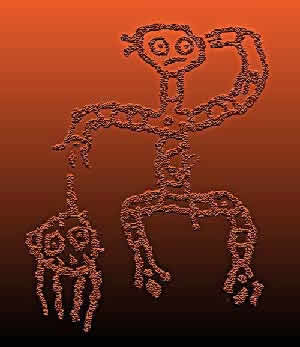
Figure 2. Detail of panel Da-032 at Toro Muerto. Drawing by Maarten van Hoek.
Height of the anthropomorph is approximately 60 cm.
In reality there are only four parallel lines from the ‘chin-area’ and the ‘carrying rope’ is not linked to the hand of the ‘trophy’ head carrier. The mouth of the ‘trophy’ head may have been indicated with a row of three small triangles (teeth?). Even though the style of execution of the ‘carrier’ and the ‘trophy’ head is the same, it is always possible that the ‘trophy’ head was added at a later stage.
Most interesting is panel Bb-009B (panel A will be discussed later) where two anthropomorphic figures carry a ‘trophy’ head each. Because panel Bb-009B faces north, towards the sun, the images are often hard to see and I passed this boulder several times without noticing the ensemble. Possibly for this reason panel B is not illustrated in Núñez Jiménez (1986) or in any other publication that I could check. However, the rock has been noted before as it has a 4-digit number painted in black on one of the sides. It is uncertain, though, if the ‘trophy’ head carriers have also been noted. As a big crack makes it very easy to steal this panel without damaging the ensemble, I will not reveal the position of boulder Bb-009.
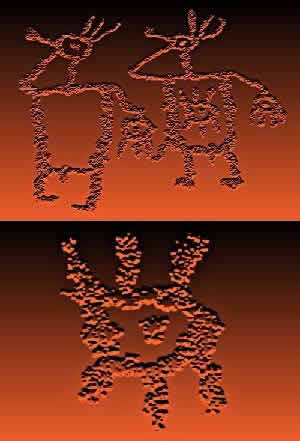
Figure 3. Panel Bb-009B at Toro Muerto. Drawings by Maarten van Hoek.
Height of the larger anthropomorph is approximately 50 cm.
The two ‘trophy’ head carriers appear on a nearly vertical surface of boulder Bb009B and are standing side by side (Figure 3; small part retouched by the author to restore natural damage). Both anthropomorphs are frontally depicted and seem to have some kind of sex indication near the genital areas, but these are too uncertain to determine if the two figures are male or female. I will return to this issue later. There are a number of remarkable features concerning this duo. First there is the resemblance between the shape of the heads of the anthropomorphs and the ‘trophy’ heads they carry. All heads are rather oval shaped and have (three or four) short lines emerging from them. The real heads have short lines running upwards that are suggestive of real hair, while the two ‘trophy’ heads have lines that run downwards from the ‘chin-area’ and these lines may represent the hair on the dead person’s head. What furthermore unites all five ‘heads’ is that all five ‘heads’ have only one central dot, possibly as a ‘pars pro toto’ for eyes or possibly for all facial features, like many other instances at Toro Muerto.
Even more interesting is the design that has been depicted on/inside the thorax of the smaller figure (Figure 3, below). It is an oval with three lines emerging from the upper end, similar to real hair on a life head, as well as three lines resembling the characteristic ‘hair from the chin area’ of a ‘trophy’ head. It also has one single dot in the centre. The design reflects and combines the heads of the carriers and the ‘trophy’ heads they carry. Tentatively, it may be regarded as a ‘fifth head’ possibly symbolising an important Andean duality: life (epitomized by the three upward pointing lines representing the hair on a person’s life head) and death (the three downward pointing lines representing the hair of a ‘trophy’ head). Importantly, an almost exact copy of such a ‘fifth’ head occurs on panel Bc-055 at Toro Muerto. However, it is not associated with any biomorphic imagery and has no internal dot.
Interestingly, there is a possible difference between the heads of the carriers and the ‘trophy’ heads that - together with another interesting feature - may offer a clue as to what sex both figures have. Both anthropomorphs have their right arm raised, but unlike the empty hands of the examples on panels Da-032 and Cb019D, the figures on panel Bb-009B seem to hold a short, straight object that could be some kind of wind instrument. Although the upper part of the ensemble is damaged in places (I have retouched my drawing to reconstruct the damaged part), those straight objects seem to be held against the right-hand side of the head, suggesting that that is the place where the mouth is situated. If this indeed is the case, then the heads of the two carriers are not shown frontally, but in profile. This seems to be confirmed by the position of the lines representing the hair: those lines are only found on the left-hand half of the head, enhancing the idea that the carriers are looking to the right. If this is the case, then - up to now - these two figures represent the only ‘flute-players’ in the rock art repertoire of Toro Muerto and its immediate neighbourhood (Van Hoek 2005: 30). And if the straight objects indeed are flutes then, they are simultaneously gender indications, as in prehistoric Andean societies only male persons were allowed to play the flute (Van Hoek 2005: 26). Moreover, Silverman & Proulx (2002: 136) argue that ‘trophy’ heads are not depicted associated with women in Nasca iconography. As the trophy head and the flute are often part of the shaman’s regalia, it is acceptable to suggest that the two figures on panel Bb-009B depict two male shamans involved in some kind of ritual.
3.1.2 -QUESTIONABLE ‘TROPHY’ HEAD CARRIERS
There are several petroglyphs of anthropomorphic figures in the Majes Valley that might represent ‘trophy’ head carriers, mainly by their analogy with ‘definite’ examples. An example is an anthropomorphic figure on panel Cb-019D at Toro Muerto that may carry a ‘trophy’ head (Figure 4). It is not shown in Núñez Jiménez (1986). Except for the head (?) and the upper end of a strange object emerging from the head the figure is completely pecked. A line between the legs may indicate (male or female?) sex. Again it has the left arm in a ‘saluting’ position with an empty left hand. However, the right hand seems to carry a rectangular pecked area that is attached with a short line to the middle finger of the hand. The rectangle has no facial features but still could represent a ‘trophy’ head. Especially the analogy with the figures on panels Bb-009B and Da-032 makes it possible that a ‘trophy’ head carrier is depicted here as well.

Figure 4. Detail of panel Cb-019D at Toro Muerto. Drawing by Maarten van Hoek.
Height of the anthropomorph is approximately 33 cm.
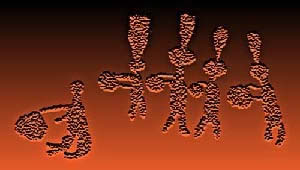
Figure 5. Detail of panel Be-048 at Toro Muerto. Drawing by Maarten van Hoek.
Height of the left-hand anthropomorph is approximately 10 cm.
At Toro Muerto at least four panels show (rows of) anthropomorphic figures that are suggested to be ‘tambourines’ (Disselhoff 1968: 31) or ‘musicians’ (for example: Núñez Jiménez 1986: Fig. 2300). The interpretation of ‘tambourines’ is problematic. Proulx (2010: pers.com.) thinks that the disk-like objects carried by the anthropomorphs in Figure 5 are heads, not ‘tambourines’, which are lacking in the ancient Andes. Proulx further argued that the objects could be drums, but simultaneously claims that Nasca drums are very large ceramic objects that are never displayed in the ceramic art as a flat disk. Therefore, I do not challenge the possibility that indeed these figures are musicians (beating a drum), but I would like to evoke the option that (some of) these anthropomorphs are carrying ‘trophy’ heads. Most important in this issue is panel Be-048 where at least 12 anthropomorphs hold a circular, fully pecked object in their hands. Only a few anthropomorphs seem to have been depicted in profile; the others are either fully frontally depicted or their position is inconclusive. The 12 figures are simple, fully pecked renderings of anthropomorphs showing no details like hands or facial features. However, four anthropomorphs have a distinct ‘plume’ emerging from the head (Figure 5), reminiscent of the anthropomorph on panel Cb-019D (Figure 4). Several times, the fully pecked, circular objects are much larger than the circular, fully pecked heads of the anthropomorphs and a few times there is only one arm involved holding the circular object while there is no second arm depicted. One similar anthropomorph, showing two arms holding a circular object and featuring the ‘plume’ on its head, appears on panel Be-054B, at least one (but possibly four) comparable example(s) occur on panel Cd-052 and panel Cd-053B has at least one similar scene. Panels Be-054B, Cd-052 and Cd-053B are not illustrated in Núñez Jiménez (1986). These 17 ‘tambourines’ are not regarded by me -statistically - as ‘trophy’ head carriers (see Appendix), but again, I prefer to acknowledge other interpretations than only ‘musicians’.
On panel Cd-057 at Toro Muerto is a row of three frontally depicted anthropomorphic figures, tentatively suggested by Núñez Jiménez to be ‘musicians’ - ‘tres personas con ¿instrumentos musicales?’ (1986: Fig. 2303). Each figure holds an outlined, circular object that might be a musical instrument, but equally it may be a ‘trophy’ head, as all figures (Figure 6) have the object connected with a short, vertical line (a carrying rope?) to the outstretched right arm/hand (the central figure with a possible ‘tumi’ in his left hand?). Two of the figures also have an outlined, circular head (and a dot between the legs), while the third figure seems to be incomplete. The analogy between the shape of the head and the circular objects may also indicate that the circular objects are ‘trophy’ heads. A similar figure appears in the painted rock art at Tambolic, Department of Amazonas, which is also suggested to be a ‘musician playing the tambourine’ (Delgado Alcarón 2006). But this figure as well could depict a ‘trophy’ head carrier. Another questionable ‘trophy’ head carrier appears on panel Cb-010A at Toro Muerto. It is a simple match-stick anthropomorph with outstretched arms and fully pecked, ovalish head from which four lines emerge (Figure 7). In its left hand it seems to hold an object from which also four lines emerge. It may be an exaggerated hand (a feature that I noticed elsewhere at Toro Muerto), but equally it might represent a ‘trophy’ head. It also seems to have an object in its right hand. All the objects as shown on panels Cd-057 and Cb-010A are regarded as (possible) ‘trophy’ heads in this paper.
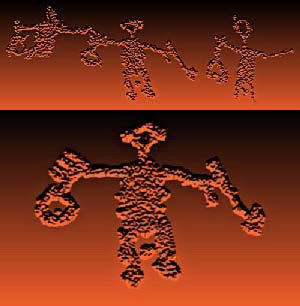
Figure 6. Details of panel Cd-057 at Toro Muerto. Drawings by Maarten van Hoek
based on a photo by Rainer Hostnig. No scale available.
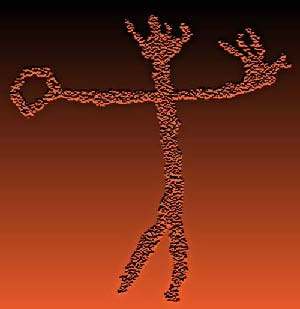
Figure 7. Detail of panel Cb-010A at Toro Muerto. Rough sketch by Maarten van Hoek.
Height of the anthropomorph is approximately 40 cm.
On the other side of the Majes Valley, approximately 8 km to the east of Toro Muerto, is the extensive site of Alto de Pitis. On panel AP3-065A is a rather large petroglyph of a frontally depicted anthropomorphic figure with a raised left arm with an empty left hand positioned in a severely damaged/weathered area (Figure 8). The oval-shaped right hand has four parallel lines from the ‘chin-area’ that could either be fingers or represent hair. There are some faint markings inside the hand/head that could represent facial features. It is not at all certain that a ‘trophy’ head carrier has been intended here, especially as the much larger head is rectangular showing many distinct details such as eyes with ‘tears’, an open mouth, a nose and circular ears, the whole giving the impression that the anthropomorph is wearing the mask of a bear.
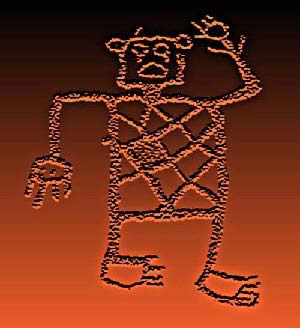
Figure 8. Detail of panel AP3-065A at Alto de Pitis. Drawing by Maarten van Hoek.
Height of the anthropomorph is approximately 80 cm.
3.1.3 - POSSIBLE ‘TROPHY’ HEAD CARRIERS AT OTHER SITES
Relatively very few examples of ‘trophy’ head carriers occur outside the Majes Valley and some are even questionable. South of the Majes Valley I only know of possible ‘trophy’ head carriers at Rosario in northern Chile (350 km SE of Toro Muerto). On the smooth, north-facing panel ROS-030 are two anthropomorphic figures, apparently archers. Each figure has a bow-like object in the right hand and an outlined circular object connected by a short line (a carrying rope?) to the outstretched right arm (Figure 9). As also the head of each ‘archer’ is represented by a simple outlined circle, it is acceptable to suggest that these ‘archers’ are also carrying a ‘trophy’ head. On the rough, west-facing surface of boulder ROS-031, located directly opposite the cliff with panel ROS-030, is a smaller, completely frontally depicted ‘archer (?) with a possible ‘trophy’ head. On the same panel is a second anthropomorph that may also be a ‘trophy’ head carrier. A full survey of the Rosario site may reveal more examples, especially as the only report available to me (Valenzuela, Briones & Santoro 2002) does not at all mention any ‘trophy’ head carrier imagery.
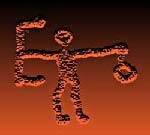
Figure 9. Detail of panel ROS-030 at Rosario. Drawing by Maarten van Hoek.
Height of the anthropomorph is approximately 29 cm.
In the Nasca drainage are several petroglyphs of ‘trophy’ head carriers, but in several cases there is some element of doubt, mainly caused by the indistinct renderings on rough surfaces. The first example of a possible ‘trophy’ head carrier in the Palpa Valley is found on the well known panel VIU-001A at La Viuda, although - as far as I could check - not a single publication reported the possibility of a ‘trophy’ head on this panel. The panel features three unique ‘seated’ figures, all holding objects in their hands. However, the (three-legged?) right-hand figure (as seen by the observer) has a small object in the right hand that shows seven short, parallel, but slightly curved lines descending from a small rectangular object with internal markings that could well represent facial features (Figure 10). Therefore, the object may well represent a ‘trophy’ head. It may be significant that this ‘seated figure’ is the only one with a rectangular head, just like the purported ‘trophy’ head it may hold.
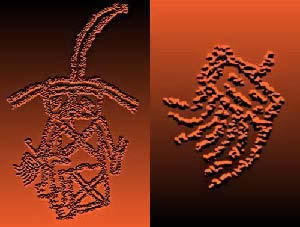
Figure 10. Detail of panel VIU-001A at La Viuda. Drawings by Maarten van Hoek.
Height of the anthropomorph (toe to ‘plume’) is approximately 44 cm.
Only 2.5 km further NNE is the extensive petroglyph site of Chichitarra where certainly one, but possibly five ‘trophy’ head carriers have been reported. Panel CHI-022 features an anthropomorph with outlined circular head and outstretched arms. The left arm holds a linear object, while the right arm is connected by a short line to a head with two dots for eyes (Figure 11). Because this possible ‘trophy’ head also features three or four rather long lines that extend from the ‘chin-area’, it may well represent a complete human body; or possibly a ‘pars pro toto’ figure. Petroglyphs with arms and/or legs directly attached to a head image (possibly a ‘pars pro toto’ figure because it is lacking a thorax) are a common feature in the area of the Nasca drainage (however, see also the ‘trophy’ head on panel HCR-S40 at Huancor: Figure 19). Unfortunately, this part of the panel is rather damaged/weathered so it is still inconclusive what exactly is ‘carried’ by the larger anthropomorph. Boulder CHI-022 is located in a section of the Chichitarra complex (Section II) that has not been illustrated (visited?) by Núñez Jiménez (1986).
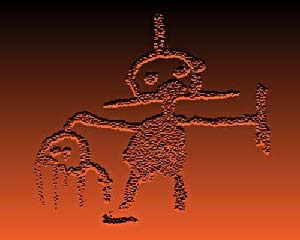
Figure 11. Detail of panel CHI-022 at Chichitarra.
Drawing by Maarten van Hoek. No scale available.
In Section III (La Cabañita) Núñez Jiménez reported at least two ‘trophy’ head carriers. One example (Figure 12), on panel CAB-012 (Núñez Jiménez 1986: Fig. 1997 - Piedra 28) is confirmed to be a definite ‘trophy’ head carrier by carefully scanning a photograph kindly supplied by Enrique Lévano (2010: pers. com.). The other example appears on panel CAB-023 (Núñez Jiménez 1986: Fig. 1983 - Piedra 9) which is a boulder in a rather awkward position on an extremely steep slope at La Cabañita (Sector III). Apparently Núñez Jiménez missed the possible ensemble on nearby panel CAB-013 (exact location unknown to me), where a small, leg-less anthropomorph may hold a ‘trophy’ head (Figure 13).
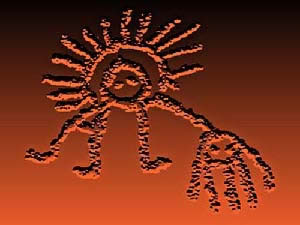
Figure 12. Detail of panel CAB-012 at La Cabañita. Drawing by Maarten van Hoek,
based on a photo by Enrique Lévano. Height of the anthropomorph is approximately 33 cm.
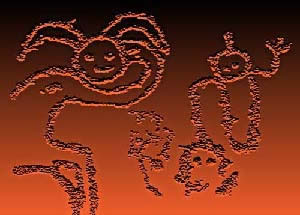
Figure 13. Detail of panel CAB-013 at La Cabañita.
Drawing by Maarten van Hoek. No scale available.
Also the next panel is not included in Núñez Jiménez (1986), although Ana Nieves (2007: 95) offers a fine description of the panel (Rock 43 of Sector II), which I have labelled panel CHI-039. It is uncertain what exactly the figure represents, an anthropomorph, a zoomorph or some mythical being, but it is fairly certain that it carries a ‘trophy’ head (Figure 14). Nieves relates this figure to depictions of anthropomorphs that hold ‘trophy’ heads on Paracas embroidered textiles and because of the large round eyes she suggests that the figure could refer to the Paracas Oculate being. Moreover, the way the hair of the ‘trophy’ head on panel CHI-039 has been depicted, resembles a ‘trophy’ head hold by Paracas figures with bifurcated headdress (Nieves 2007: Fig. 6.10b).
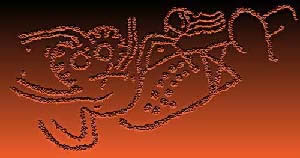
Figure 14. Detail of panel CHI-039 at Chichitarra. Drawing by Maarten van Hoek.
Width of the biomorph is approximately 95 cm.
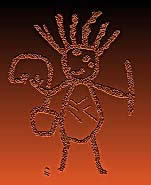
Figure 15. Detail of panel QMC14 - Rock B at Quebrada Cangana Majuelos.
Drawing by Maarten van Hoek, based on an (unpublished) photograph by Ana Nieves.
Height of the anthropomorph is approximately 34 cm.
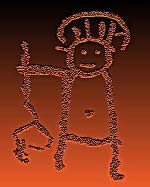
Figure 16. Detail of panel XO2 - Rock 1 at Hacienda Jumana. Drawing by Maarten van Hoek,
based on an (unpublished) photograph by Ana Nieves. Height of the anthropomorph is approximately 38 cm.
In the same extensive survey Ana Nieves reports that on panel QMC14 - Rock B, at Quebrada Cangana Majuelos, there is a frontally depicted anthropomorphic figure (Figure 15) with a linear object in the left hand. A line seems to depart from the right hand, curving back to the outstretched right arm. Another line links the right elbow with a more or less circular object that, according to Nieves (2007: 270) could represent a ‘trophy’ head (Nieves 2009: pers. comm.). Panels QMC14 - Rock B and Rock C also feature two felines associated with possible ‘trophy’ heads. Another petroglyph (Figure 16; offering my own interpretation) of an anthropomorph at Hacienda Jumana Site 2 could also be a ‘trophy’ head carrier, although the exact pattern is obscure (Nieves 2007: Site XO2 - Rock 1; Fig. A-28, Elements 2G and 2H; Nieves 2009: pers. com.).
At Hacienda Jumana Site 1 (Nieves 2007: RN23 - Rock 2) an anthropomorphic petroglyph seems to hold a ‘trophy’ (?) head in the raised left hand; at least the possible ‘trophy’ head seems to be hovering over the arm/hand (Figure 17). Importantly, Nieves (2007: 156) suggests that this ‘floating’ object is a ‘trophy’ head as the shape it holds resembles the shape of its own head. This configuration may be compared with the anthropomorphs on panel Cb-010 at Toro Muerto (Figure 7) and panel CMn-077 at Cerro Mulato (Figure 22).
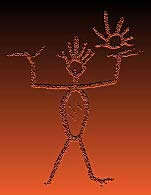
Figure 17. Detail of panel RN23 - Rock 2 at Hacienda Jumana Site 1.
Drawing by Maarten van Hoek, based on a photograph by Ana Nieves.
Height of the anthropomorph is approximately 23 cm.
Further northwest is Huancor with two panels featuring definite ‘trophy’ head carriers. On panel HCR-E25 is a frontally depicted anthropomorph (though with possible ‘antlers’ emerging from its head) that holds a linear object in the left arm/hand, while a ‘trophy’ head is connected by a short line to the right arm (no hands are shown). The line is attached to the ‘chin-area’ as the position of the mouth indicates that the head is held upside-down, unlike many other examples discussed in this paper (Figure 18).
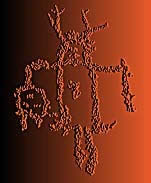
Figure 18. Panel HCR-E25 at Huancor. Drawing by Maarten van Hoek. No scale available.
The other example at Huancor occurs on panel HCR-S40 and comprises a very intricate anthropomorph with an enormous headgear (?). The very small left arm/hand holds a small ‘head’ by the hair (Figure 19). The ‘trophy’ head features markings representing the eyes and mouth, while two lines from the ‘chin-area’ may represent legs rather than anything else. Núñez Jiménez (1986: Fig. 1626) illustrates a panel from Huancor that I have not seen. It may involve a complex ‘floating’ anthropomorph that may carry a ‘trophy’ head without facial features.
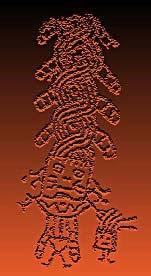
Figure 19. Detail of panel HCR-S40 at Huancor. Drawing by Maarten van Hoek.
Height of the anthropomorph plus ‘headdress’ is approximately 75 cm.
North of Huancor there is a gap - apparently bereft of ‘trophy’ head imagery - of about 475 km. Núñez Jiménez (1986: Fig. 1472) suggests that a ‘trophy’ head petroglyph is found on panel COC-002A at Cochineros in the Mala Valley, but after inspection in the field I find this example highly questionable. The next example of a ‘trophy’ head carrier in petroglyph art occurs at Ama II, near Huaraz (Hostnig 2003: 15). Further north, on panel ALT-069 at Alto de la Guitarra in the Río Virú drainage, we find one of the best examples of a ‘trophy’ head carrier (Figure 20). As the illustration by Núñez Jiménez (1986: Fig. 646) is incorrect in some details, I hereby reproduce my drawing that is based on a photograph made by Prof. Cristóbal Campana (2009: pers. comm.). The figure, labelled by Campana (2006: Fig. 18) as the ‘Decapitador’ and suggested to be of Sechín origin, holds a triangular object in the left hand (showing the fingers in the typical Sechín style). Also the shape of the ‘trophy’ head is reminiscent of the style of the severed heads at Cerro Sechín. The object in the left hand may be a ceremonial knife, like a tumi, used to decapitate the victim’s head, which he carries by the hair in the other hand (see also Figure 6). A parallel of such a ‘Decapitador’ in Paracas iconography is illustrated in Nieves (2007: Fig. 6.10b).
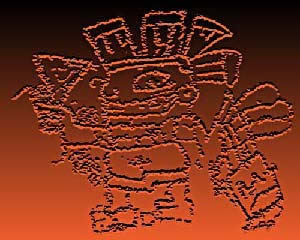
Figure 20. Detail of panel ALT-069 at Alto de la Guitarra. Drawing by Maarten van Hoek,
based on a photo by Cristóbal Campana. Height of the anthropomorph is about 80 cm.
Much further north is the rock art site of Cerro Mulato in the Chancay Valley where Núñez Jiménez reported one ‘trophy’ head carrier, on panel CMn-122A (1986: Fig. 101 - Piedra 92). After inspection of panel CMn-122A in the field I agree that the figure seems to hold something in the left hand, but the nature of the ‘object’ is most uncertain (Figure 21). It definitely is not shaped like a head as suggested by the illustration by Núñez Jiménez. Not far from this boulder is panel CMn-077 on which an anthropomorphic figure may hold a ‘trophy’ head in its right arm, but the relationship between the carrier and the ‘trophy’ head is unclear (Figure 22). The configuration is somewhat similar to the ensemble on panel RN23 - Rock 2 in the Nasca Valley (Figure 15).
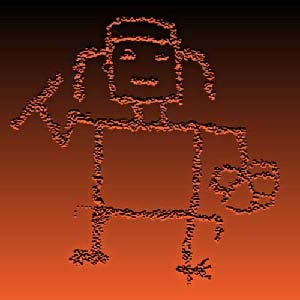
Figure 21. Detail of panel CMn-122A at Cerro Mulato. Drawing by Maarten van Hoek.
Height of the anthropomorph is approximately 70 cm.
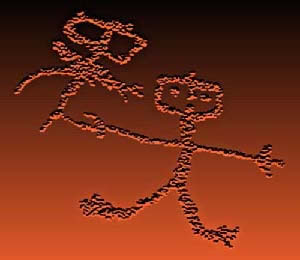
Figure 22. Panel CMn-077 at Cerro Mulato. Drawing by Maarten van Hoek.
Height of the anthropomorph is approximately 49 cm.
3.2.1A - ‘TROPHY’ HEADS ASSOCIATED WITH ZOOMORPHIC FIGURES
Toro Muerto is also exceptional for having several unequivocal examples of zoomorphs that seem to carry a ‘trophy’ head. There are two general types of zoomorphs that are associated with ‘trophy’ heads. The majority of the zoomorphs that carry ‘trophy’ head are birds. On panel Ba-012 is a right-looking bird depicted in profile with a line from the beak. At the end of that line is a small object with two dots, possibly representing eyes and two short lines from the ‘chin-area’ (Figure 23). On the same panel is a quadruped, also looking to the right and depicted in profile, with a line from the mouth ending in a strangely shaped object (a biomorph?) with two short lines from the ‘chin-area’; a ‘trophy’ head?
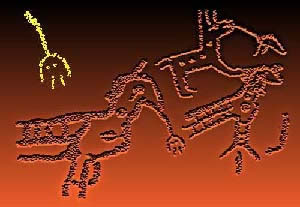
Figure 23. Detail of panel Ba-012 at Toro Muerto. Drawing by Maarten van Hoek.
No scale available. Yellow figure: enlargement of the ‘trophy’ head plus ‘carrying cord’.
Further south are two boulders close together. On panel Bb-023A is a large, angular-linear, profile-bird that looks to the left with a short line from the beak ending in a small outlined object that may be a ‘trophy’ head. The object might have two small dots for eyes (Figure 24).
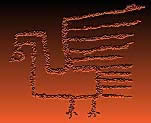
Figure 24. Detail of panel Bb-023A at Toro Muerto. Drawing by
Maarten van Hoek. Height of the bird is approximately 34 cm.
Only two metres distant is panel Bb-038A with a similar, angular-linear, profilebird that looks to the left. It has no distinct line from the beak, but there is a small object directly below the beak with two lines from the ‘chin-area’. Most interesting is that the eye of the bird has exactly the same shape as the alleged ‘trophy’ head; only the ‘carrying cord’ is lacking (Figure 25).
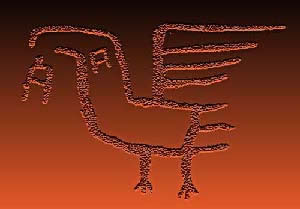
Figure 25. Detail of panel Bb-038A at Toro Muerto. Drawing by Maarten van Hoek.
Panel Bg-008 features a curvilinear profile-bird that has its claws directly above a circular object with three splayed grooves (hair?) from the top end. There may be two dots (for eyes?) inside the object. Much further south is the profusely decorated but unfortunately damaged panel of Dx-058. Among the images is a large curvilinear bird depicted in profile and looking to the left (Figure 26). Just below the beak is an object that has five parallel lines from the ‘chin-area’. From the top end are two short, parallel lines that may represent the neck of the ‘trophy’ head. The end of this ‘neck’ feature is very close to the beak of the bird but does not touch it. Not illustrated by Núñez Jiménez (1986: Fig. 2536) are two clear dots that almost certainly represent eyes. Therefore it is highly probable that this object is a ‘trophy’ head as well. Also, it looks very much like a similar, isolated ‘trophy’ head at Cerro Pano discussed below (Figure 38B).
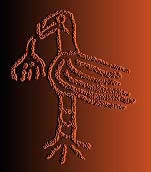
Figure 26. Detail of panel Dx-058 at Toro Muerto. Drawing by Maarten van Hoek.
Possible petroglyphs of ‘trophy’ heads related with bird imagery elsewhere in petroglyph art of coastal Peru are rare. Núñez Jiménez suggests that a petroglyph on panel HCR-E47 at Huancor represents a “bird carrying a ‘trophy’ head in its claws” (1986: Fig. 1685). After inspection in the field I agree that a small ‘head’ is visible on that panel, but the depiction of the ‘bird’ is questionable as well as the relationship of the alleged ‘trophy’ head with the alleged cross-shaped ‘bird’ image. However, panel CMz-248 at Cerro Mulato may involve depictions of two ‘trophy’ head carrying birds. The images on the panel are rather weathered but seem to represent zoomorphs, possibly birds. Especially the left-hand ‘bird’ seems to carry a circular object with short lines in the beak/mouth that may be a ‘trophy’ head.
At Toro Muerto some petroglyphs of quadrupeds purportedly ‘carrying’ a ‘trophy’ head occur, like the possible example on panel Ba-012. On panel Be044B is a quadruped that looks to the left and is depicted in profile. It has a circular object in its mouth that may be a ‘trophy’ head (Figure 27).
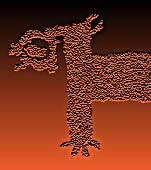
Figure 27. Detail of panel Be-044B at Toro Muerto. Drawing by Maarten van Hoek.
Less problematic is the example on panel Cc-005 again featuring a quadruped that looks to the left and is depicted in profile. Remarkable are the two massive, fully pecked legs. It has a very distinct line from the mouth that is attached to a rectangular object with two dots for eyes and three long, parallel grooves from the ‘chin-area’. This object almost certainly represents a ‘trophy’ head (Figure 28).
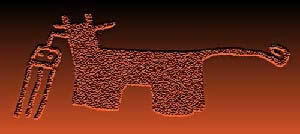
Figure 28. Detail of panel Cc-005 at Toro Muerto. Drawing by Maarten van Hoek.
Another unequivocal example has been reported by Álvarez Zeballos (2009) at Alto de Pitis, about 8 km to the east of Toro Muerto. His detail photograph of panel C-S2-06-p1 (exact location unknown to me) shows an image - unfortunately, and moreover incorrectly, chalked in - of a quadruped depicted in profile and looking to the left. It has a line from the mouth that is linked to a circular object with two dots for eyes and with four parallel lines from the ‘chinarea’ (Figure 29). Except for the two dots, this ‘trophy’ head is almost identical to the ones on panel Bb-009B at Toro Muerto.
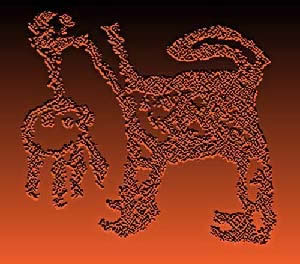
Figure 29. Detail of panel C-S2-06-p1 at Alto de Pitis. Drawing by Maarten van Hoek,
based on a photo by Álvarez Zeballos. Height of zoomorph is about 32 cm.
The Palpa Valley has two (possible) examples of quadrupeds associated with ‘trophy’ heads. Núñez Jiménez (1986: Fig. 1978) illustrates a quadruped on Piedra 5 at La Cabañita (Sector III at Chichitarra) that has a line from the mouth ending in an empty circle with three splayed lines from the ‘chin-area’. As the boulder, like many others in this area, has tumbled down the steep slope, the illustration in Núñez Jiménez is in a reversed position now, but it is obvious that - when in the original position - the quadruped has been depicted in profile and looks to the left. On the same panel is an anthropomorph possibly associated with a ‘trophy’ head, but because the illustrations in Núñez Jiménez are not always reliable, the association and nature of this ensemble is quite uncertain. On another panel of the same boulder may also be an isolated ‘trophy’ head (Núñez Jiménez 1986: Fig. 1977). On panel CHI-030 in Sector II at Chichitarra (exact location unknown to me) is the second example. It concerns a quadruped also depicted in profile and looking to the left (Figure 30). It again has a short line from its mouth that ends in a circular object with two dots and possibly five splayed lines from the ‘chin-area’ (as this part of the petroglyph is rather weathered only three lines are clearly visible).
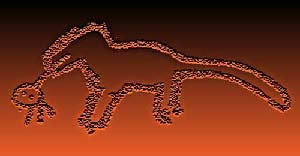
Figure 30. Detail of panel CHI-30 at Chichitarra. Drawing by Maarten van Hoek,
based on a photo by Rainer Hostnig. No scale available.
A rather special ‘group’ of quadrupeds associated with ‘trophy’ heads occurs in the Lower Nasca Valley. Nieves (2007: Figs A20 and A21) recorded at least two adjacent panels at Quebrada Cangana Majuelos (QMC14 Rock B and Rock C) each bearing the petroglyph of a feline with two parallel, curved lines emanating from the chin of the feline (Figure 31). On panel QMC14 Rock B is also an anthropomorph possibly carrying a ‘trophy’ head (Nieves 2007: 270) (Figure 15). The parallel lines from the chin of each feline end in a shape that, according to Nieves could represent a ‘trophy’ head. She moreover argues that this motif resembles felines in Paracas textiles (2007: 270). Such curved lines may indeed represent an (extra) arm (a common feature in Nasca iconography) and may be compared with the arms that emerge from the head of the Anthropomorphic Monkey (Silverman & Proulx 2002: Fig. 2.6).
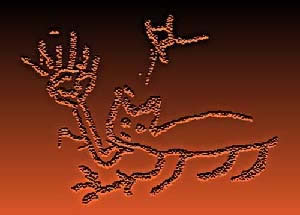
Figure 31. Detail of panel QMC14 - Rock B at Quebrada Cangana Majuelos.
Based on a drawing by Ana Nieves (2007: Fig. A20). Width about 55 cm.
3.2.1B - ‘TROPHY’ HEADS ‘DISPUTED’ BY ZOOMORPHIC FIGURES
A special class of petroglyph scenes is formed by two zoomorphs that seem to dispute a ‘trophy’ head. Only two examples of such an ensemble are known to me and both occur at Toro Muerto. One scene involves a bird and a quadruped (possibly a feline) on panel Bd-007D. The bird is depicted in profile and looks to the right. It is of the angular-linear style but this time the triangularly shaped wing is fully pecked (unlike the examples on panels Bb-023A and Bb-038A). From the beak of the bird a short line is connected to a more or less rectangular object with two small, un-pecked areas for eyes and two long grooves from the ‘chin area’ (Figure 32). Immediately in front of the bird is a quadruped with open mouth, showing two teeth, seemingly attacking the bird or disputing the ‘trophy’ head.
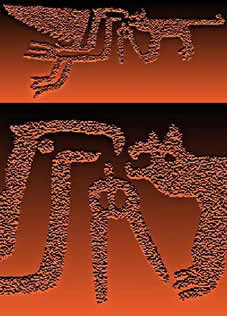
Figure 32. Details of panel Bd-007D at Toro Muerto. Drawings by Maarten van Hoek.
Height of ‘trophy’ head is about 38 cm.
A similar scene, involving two confronting birds this time, is found on panel Cb002. The surface of this panel is much weathered but two angular-linear birds depicted in profile can be recognised with difficulty. They have a rectangular object in between them. The object has three lines from the ‘chin-area’ and a (faint) line from the top end that is linked to the beak of the right-looking bird (Figure 33).
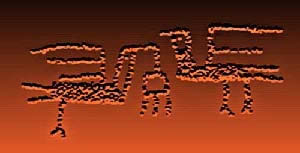
Figure 33. Detail of panel Cb-002 at Toro Muerto. Drawing
by Maarten van Hoek. Height of right-hand bird is about 18 cm.
3.3.1 - ISOLATED ‘TROPHY’ HEADS
The reason for discussing isolated ‘trophy’ heads at the end of this record is that in Andean rock art isolated heads occur rather frequently, especially in the north of Peru. In most cases these heads just seem to be what they look like: depictions of isolated human heads (or masks), possibly serving as a ‘pars pro toto’ for the entire human body (for an analogy see Silverman & Proulx 2002: 146). However, in most cases no-one will be able to determine if such an image represents a human head, a mask, a severed head or a ‘trophy’ head. Only in a few instances isolated heads can be recognised as (possible) ‘trophy’ heads. Fortunately, definite ‘trophy’ heads associated with anthropomorphs and zoomorphs (discussed earlier in this paper) offer clues about the possible nature of isolated heads. When an isolated head features one or more of the following properties, it possibly represents a ‘trophy’ head. Distinctive is the single line (carrying rope?) from the upper end of a head, and possibly for that reason Núñez Jiménez (1986: Fig. 667) regards a petroglyph at Alto de la Guitarra depicting a face or mask with a single line from its top as a ‘trophy’ head. Unfortunately, Núñez Jiménez is not consistent in his conclusion as several similar petroglyphs are not labelled as ‘trophy’ heads by him; for example Figs 792, 798 and 817 (1986). Also the (parallel) lines descending from the ‘chin-area’ are a characteristic ‘trophy’ head feature. Another property, reported at Quebrada Cangana Majuelos QMA01 - panels B and C in the Nasca Valley, is represented by a mouth formed by a (single) horizontal line that is ‘crossed’ by a number of short, parallel vertical lines, possibly indicating that the mouth was sealed by needles (Figure 43). Sealing the mouth of a trophy head was a common practice in the Nasca Culture (Ríos Valladares 2006: 23).
‘Trophy’ heads should not be confused with severed heads. A severed head is just what the term implies. The head of a victim is separated from the body, but there is no indication of subsequent ritual use like with the ‘trophy’ heads discussed in this paper (although ritual use involving severed heads cannot be ruled out, of course). The most gruesome collection of severed heads is found on the temple walls at Cerro Sechín in the north of Peru, but this rich collection is not regarded by me as petroglyph art. It represents architectural art, like the friezes on Egyptian temple walls. There are, however, also petroglyphs that may involve severed body parts, like the petroglyphs at Palamenco (Núñez Jiménez 1986: Fig. 946), Alto de la Guitarra (Núñez Jiménez 1986: Fig. 648) and at Cerro Negro in the Río Chicama drainage (Castillo Benites 2006: Figs 77 and 78), all in the north of Peru.
However, some isolated heads may indeed represent ‘trophy’ heads. Most interesting in this respect is a set of two isolated heads on panel Nw-013A at Toro Muerto. Both frontally depicted heads are formed by outlined squares, each enclosing three short grooves representing (closed!) eyes and a (closed!) mouth that is curved downward. Two small, possible/doubtful dots/depressions may represent nostrils. Importantly, each head has five or six, rather long, parallel lines from (near) the ‘chin-area’ (Figure 34). Although the line from the top end (the carrying rope) is lacking, it is most likely that these two heads represent ‘trophy’ heads.
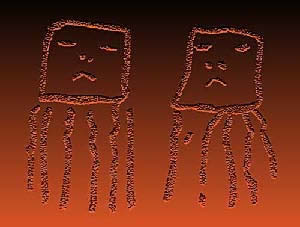
Figure 34. Panel Nw-013A at Toro Muerto. Drawing by Maarten van Hoek.
Similar square ‘trophy’ heads have also been reported by Álvarez Zeballos (2009) at Alto de Pitis. His survey reports four large ‘trophy’ heads and a smaller one on a panel labelled M-S1-13-2 by him. However, only one square represents an unambiguous ‘trophy’ head as it has a vertical line on top of the head and parallel lines from the ‘chin-area’ (Figure 45A). It also shows all facial features. The other square motifs either lack defining characteristics or are unfinished examples. One of the large squares may even have been transformed into a bird image, the numerous lines from the ‘chin-area’ now possibly forming the tail-feathers of the bird. Another unequivocal example has been reported by Álvarez Zeballos (2009) on ‘his’ panel C-S3-02-p3 at Alto de Pitis. It shows all facial features, the line (carrying rope?) emerging from the top of the head and the parallel lines from the ‘chin-area’ (Figure 45C). There may be a second ‘trophy’ head on this panel.
I already discussed the most convincing examples of ‘trophy’ head carriers at Toro Muerto. They appear on panel Bb-009B (Figure 3). Interestingly, among the few petroglyphs on panel Bb-009A there is a small, isolated figure that closely resembles the ‘trophy’ heads on panel B. It as well has one central dot and, moreover, four short lines from the ‘chin-area’ (Figure 35A). From the upper part of the ‘trophy’ head runs a ‘vertical’ line (a carrying rope?) that is linked to a ‘horizontal’ line (depending on the position of the observer). This horizontal line could represent the arm of a never finished ‘trophy’ head carrier. It possibly may have been an imitation of the complete examples on panel Bb-009B or vice versa. Panel Nw-009 has a similar circular object with three lines from the ‘chin-area’, but no central dot (Figure 35B). On panel Bc-055 is a rectangle with three parallel lines from the top and three similar lines from the ‘chin-area’. As it looks much like the element in the thorax of the smaller ‘trophy’ head carrier on panel Bb009B it might as well be a symbol representing the life-death duality.
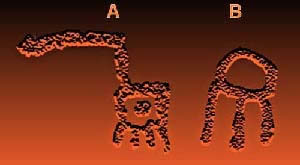
Figure 35. A: Detail of panel Bb-009A at Toro Muerto (width of ‘head’ 9 cm).
B: Detail of panel Nw-009 at Toro Muerto (no scale available). Drawings by Maarten van Hoek.
Also at other sites similar ‘trophy’ heads occur. On panel AP2-051A at Alto de Pitis is a rectangle divided into four sections by two lines. However, there is a vertical line (the carrying rope?) from the upper end as well as the characteristic parallel lines from the ‘chin-area’ (Figure 36).
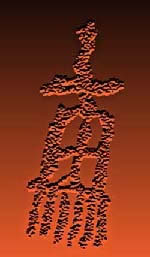
Figure 36. Detail of panel AP2-051A at Alto de Pitis.
Drawing by Maarten van Hoek.
Height of ‘trophy’ head is about 44 cm.
An interesting ‘trophy’ head petroglyph from Toro Muerto has been reported by Ing. Ji?í Vedral from the Národní Museum in Prague. As I have not seen this example I have labelled the panel Xx-004 (the prefix - Xx - indicates that the location of a panel at Toro Muerto is unknown to me). The panel shows a ‘trophy’ head with four (or six) lines from the ‘chin-area’, all facial features and even two large (possible) ‘ears’. From the top runs a vertical line (the carrying rope?) that is connected to a horizontal line with a downward pointing extension at each end (Figure 37). This E-shaped configuration has some affinities with a ‘trophy’ head at Cerro Pano (Figure 38B).
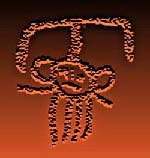
Figure 37. Detail of panel Xx-004 at Toro Muerto. Drawing by Maarten van Hoek,
based on an internet photograph by Ing. Ji?í Vedral from the Národní Museum in Prague.
On the coast, about 21 km to the east of the mouth of the river Majes is the petroglyph site of Cerro Pano. Rainer Hostnig documented 13 panels with much weathered images at this site in 2008 (Figure 38A). Only the early morning sun will reveal most patterns best. South facing panel PAN-002 features a few petroglyphs including one simple, empty circular object with three lines radiating downwards from it. It may also be an unfinished solar symbol. However, on rock PAN-005, a very large, undulating rock surface, are at least three possible ‘trophy’ heads on two different panels. On panel PAN-005A, the less steeply sloping, west facing surface, is a rather deeply cut circular motif with two parallel lines from the top end running against the gradient and clearly forming the neck (Figure 38B). The neck is linked to a horizontal line with two long lines running parallel down the slope (compare with the E-shaped configuration in Figure 37). Between these two lines (arms?) are eight shorter parallel lines from the ‘chinarea’ of the ‘trophy’ head. Two large cupules - forming the eyes - complete the impression of a head in a reversed position.
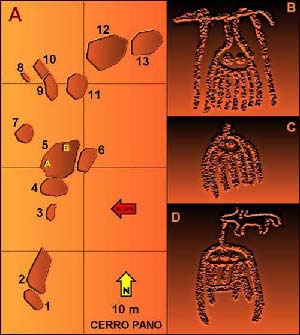
Figure 38. A: Sketch of the Cerro Pano Site near Camaná. Drawing by Maarten van Hoek,
based on Google Earth and on photos by Rainer Hostnig. Figs 38B (height 28 cm),
38C (width 20 cm) and 38D (width 18 cm): Details of panels PAN-005A and B at Cerro Pano.
Drawings by Maarten van Hoek based on photographs by Rainer Hostnig.
On the more steeply sloping, north facing panel PAN-005B are two similar motifs. One is a small circular object with a very short line running against the gradient and eight slightly splayed lines from the ‘chin-area’. Two shallow cupules seem to represent the eyes (Figure 38C). Above this ‘trophy’ head is a strange cross-shaped anthropomorph that may hold a very small ‘trophy’ head in its right arm; at least the place where the hand should be is now occupied by a small face-like shape (not illustrated in Fig. 38). Near the east edge of panel PAN005B is another ‘trophy’ head. It is a large inverted-U-shape with a horizontal line that creates a small space enclosing three shallow depressions. From the horizontal line (the ‘chin-area’) six shorter, more or less parallel lines run parallel to the legs of the U-shape (Figure 38D). However, this area is obscured possibly by one of the many zoomorphs (camelids?) that appear on this panel. Just possibly there is also a (very faint) single line from the top end that may be linked to a small zoomorph. But this combination is inconclusive from the photographs that I have available. Those zoomorphs may well be a later or earlier feature on this panel.
At Illomas (Hostnig 2003: 53), a petroglyph site about 33 km NW of Toro Muerto but not located in the Majes Valley, is at least one motif that looks much like the ‘trophy’ head on panel PAN-005A at Cerro Pano. It has one single line from the head (the carrying rope?) ending at a horizontal line that links the ‘rope’ with a feline and a snake. There are also six parallel lines from the ‘chin-area’ as well as facial features (Figure 39). It seems as if this ‘trophy’ head has been superimposed upon the rear end of a much larger petroglyph of a quadruped (a camelid?) which may be a possible indication that at least this ‘trophy’ head is a later feature. On the same panel is a much smaller zoomorph with a line from the mouth (the carrying rope?) to a circular object with two dots that possibly represent eyes. It may also be a ‘trophy’ head. The brief text accompanying the photo of Illomas on web page http://www.muniprocondesuyos.com/14601.html, also mentions “ídolos de ojos grande, empuñando en cada mano cabezas humanas” and thus more ‘trophy’ heads (or carriers) may be present at this largely unknown site. The style of the petroglyphs at Illomas is similar to the Chuquibamba iconography of the petroglyph art of the Majes Valley.
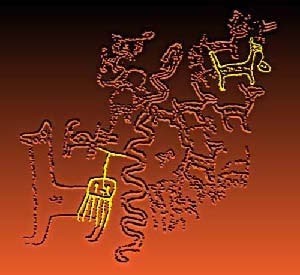
Figure 39. Detail of panel at Illomas. Drawing by Maarten van Hoek, based on an internet
photograph by an unknown author (see text and sources). No scale available.
Further possible ‘trophy’ heads are found at La Cabañita in the Palpa Valley (Núñez Jiménez 1986: Fig. 1977 - Piedra 5) and on Panel SAL-071 at San Antonio in the Río Locumba drainage (exact location unknown to me). This latter panel shows - amongst many other petroglyphs - two circular objects, each with two dots for eyes, respectively five and four short, slightly splayed lines from the ‘chin-area’, and a short single line on top of the object (Figure 40).
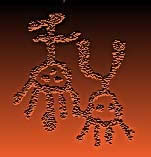
Figure 40. Detail of panel SAL-071 at San Antonio (Locumba). Drawing by Maarten van Hoek,
based on a photograph by Rainer Hostnig. Height of right-hand ‘trophy’ head is about 28 cm.
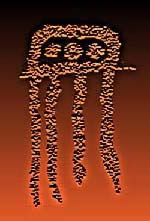
Figure 41. Detail of a panel at Chillihuay. Drawing by Maarten van Hoek,
based on a photograph by Rainer Hostnig. Height is about 39 cm.
At La Caldera in the Vitór Valley there is a possible isolated ‘trophy’ head (Cardona 2002: 155), but this site - and this specific panel as well - is too poorly documented to be certain in this case. On panel CHY-D-006A at Chillihuay in the Ocoña Valley are two motifs that could be ‘trophy’ heads. Each symbol comprises a narrow rectangle enclosing three and four cupules (facial features?) and each motif has four or five parallel lines from the ‘chin-area’ (Figure 41). A photograph on the internet (Drakoman 2007) shows a petroglyph panel with at least one possible ‘trophy’ head. Unfortunately no site name is mentioned. It has strong affinities with the examples at Illomas and Cerro Pano, but unfortunately the photo is not clear enough to be certain. The petroglyph panel may well represent a panel at Chillihuay (about 85 km NNW of Camaná). Therefore, it has not been included in the number of ‘trophy’ heads of the Majes Valley.
3.3.2 - THE SEALED MOUTH
On panel Bc-050A at Toro Muerto (not illustrated in Núñez Jiménez 1986) is an isolated, frontally depicted head in front of a large, laterally depicted zoomorph. The head (Figure 42) has a zigzag from each side, four short lines from the upper part of the head (hair?) and all facial features. Interestingly, the mouth represented by a single line - has four short parallel lines running downwards, thus forming a small ’rake’. This may be an indication that the lips are pinned shut with stitches or needles (or thorns from the huarango tree, as with factual trophy head skulls found in the Nasca drainage) and therefore the head on panel Bc-050A may be a ‘trophy’ head. This ‘rake’ configuration is - as far as I know unique among the isolated head petroglyphs at Toro Muerto and is also unlike the several examples at this huge site where (isolated) heads show teeth in an open, grinning mouth. Only the well-known ‘mummy bundle’ petroglyph on panel Fa001B, El Tuerto, may have a similar ‘sealed’ mouth.
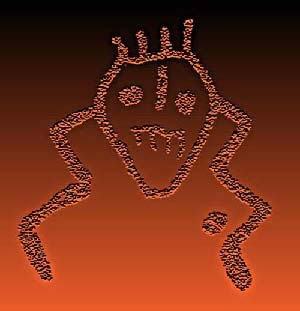
Figure 42. Detail of panel Bc-050A at Toro Muerto.
Drawing by Maarten van Hoek. No scale available.
At least four petroglyphs of faces in Nasca Valley show such ‘sealed’ lips. Nieves (2007: 229) suggests that two of these, on panels QMA01-B and C, have ‘trophy’ head features (Figure 43) and that the main feature is the use of lines that run through the lips of these figures, much like the spines on actual Nasca trophy heads. Panel QMA01-B has another petroglyph (Nieves 2007: Fig. A.12, element E) where a head or anthropomorph also shows the ‘rake’ configuration. A similar ‘head’ appears on Panel H at QMA01 (Nieves 2007: Fig. A.18).
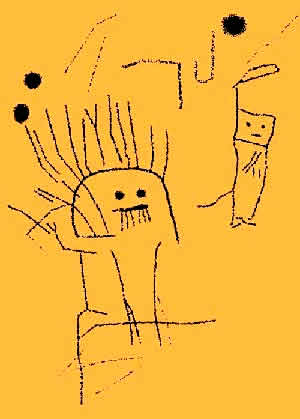
Figure 43. Detail of panel QMA01-B. Drawing by Maarten van Hoek,
based on an illustration by Ana Nieves (2007: Fig. 9.17). Width of the bigger head is 10 cm.
Last but not least mention should be made of a fine ceramic that is stored (on display?) in the Archaeological Museum (Pedagogico la Inmaculada) in Camaná, a photo of which has been put onto the internet (Drakoman 2006). Unfortunately its exact provenance is unknown to me, but it is likely that it has been found in the Camaná area. It is a round pot (size unknown) with a handle. It seems to have a red painted background on which a ‘black’ and ‘white’ image has been added. From an interrupted horizontal band around the neck of the pot at least two (but perhaps three or four) similar vertical bands run downwards, each ending in a circular head with circular eyes, all with a pupil. Most interestingly the mouth of at least one head seems to depict a ‘sealed mouth’ (Figure 44) and thus the heads depicted on this pot may be ‘trophy’ heads with the carrying rope.
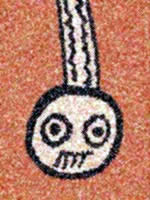
Figure 44. Detail of the painting on the ceramic stored at Archaeological Museum in
Camaná. Drawing by Maarten van Hoek, based on a photograph by Drakoman 2006.
Scale unknown.
DISCUSSION
Decapitation of human heads is definitely one of the most intriguing and - for the modern researcher - one of the most macabre practices of prehistoric Andean societies. Many of those severed heads may have served as trophy heads and have subsequently been used in various kinds of rituals that no doubt will have varied from area to area. Archaeological evidence ranges from actual trophy head skulls found in graves (for instance the Nasca cache at Cerro Carapo in the Palpa Valley), numerous depictions on pottery (especially Nasca ceramics) and fabrics (for instance in Paracas textiles), monoliths (for example at Kuntur Wasi in the Jequetepeque drainage in northern Peru), the enormous geoglyph of the Killer Whale associated with a ‘trophy’ head among the famous Nasca Lines (Silverman & Proulx 2002: 170), and several temple wall friezes (for instance at the Huaca de la Luna near Trujillo) to various examples in Andean rock art of the Desert Andes. Depictions of (possible) ‘trophy’ heads in Andean rock art, though relatively scarce, are for instance found as far north as La Pecata in the Department of Amazonas (Hostnig 2003: 5) and as far south as the Santa Barbara site in the Loa Valley of Chile (Berenguer 1999: 41), a distance of roughly 2000 km. No doubt there will be more examples elsewhere in this area. Centrally located within this enormous stretch of coastal deserts are two remarkable concentrations of petroglyphs of ‘trophy’ heads: the Río Grande de Nasca drainage and The Majes Valley.
Regarding the occurrence of ‘trophy’ head petroglyphs in the Majes Valley there are two general alternatives. Firstly, it is possible that the practice of ‘trophy’ head hunting and/or their ritual use developed independently within the local Chuquibamba Culture and secondly, it is probable (and more likely) that those practices were borrowed from another culture. Although the most influential foreign Andean civilization in the Majes Valley has been the Wari, it is not at all certain that indeed the Wari were the first to introduce the practice of the ‘trophy’ head. Unfortunately, also the petroglyph art of the Majes Valley is often ascribed to the Wari and this deeply rooted idea may hinder the acceptance of different alternatives (an issue that still needs to be explored). Although I do not rule out possible Wari influence at all, I personally dispute the idea that the Wari are responsible for most of the rock art imagery in the Majes Valley. I prefer to attribute most of the petroglyph art of the Majes area to be expressions of the local Chuquibamba culture. Petroglyph art definitely featuring the typical Chuquibamba iconography is found at sites such as Illomas in the west to Culebrillas in the east (120 km apart) and from La Baranca in the north to Cerro Pano at the Pacific Coast (70 km distant).
Unfortunately, very little research has been done to explore the origin of the ‘trophy’ head imagery from the Majes Valley. Yet, several trophy head skulls have been found in the valley. In the museum at Aplao, the capital of the valley, a number of examples are on display. One of these skulls is illustrated in the survey by Álvarez Zeballos (2009). The photo shows a head with hair and the foreheadpierced with a small hole to attach a carrying rope to. According to Álvarez Zeballos (2009) this ‘trophy’ head was found in a rectangular tomb at Yupanqui near Aplao, unfortunately now destroyed. Interestingly, it looks much like the ‘trophy’ head skulls from the Nasca area and thus it is interesting to investigate the possibility of Paracas-Nasca influence in the Majes Valley. Like the saying ‘no man is an island’, also not a single Andean valley was completely isolated from the neighbouring valleys.
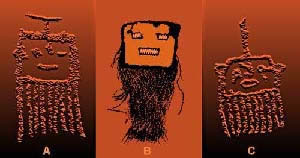
Figure 45. A: Detail of panel M-S1-13-2 at Alto de Pitis. Drawing by Maarten van Hoek,
based on a photograph by Álvarez Zeballos. Width of ‘trophy’ head is about 26 cm.
B: Textile from the Cabezas Achatadas cemetery near Camaná. Drawing by Maarten van
Hoek, based on a photograph in Cadona (2002: 62). No scale given.
C: Detail of panel C-S3-02-p3 at Alto de Pitis. Drawing by Maarten van Hoek,
based on a photograph by Álvarez Zeballos. No scale available.
According to Proulx, the heartland of the Nasca Culture occupied the combined drainage areas of the Ica and Río Grande de Nasca rivers, but Nasca influence ranged from the Cañete Valley in the north to the Acarí Valley in the south, an area extending 300 kilometres along the coast (1994: 1). Although Silverman & Proulx (2002: 90) state that Nasca pottery is rare south of the Acarí Valley, they mention several Nasca style archaeological finds as far as Arica, Chile (see also Proulx 2007). Most important in respect of the subject of this paper are the excavations by Disselhoff in 1965 at the Cabezas Achatadas cemetery near Camaná, at the mouth of the Majes River. Disselhoff (Silverman & Proulx 2002: 91; Proulx 2007) unearthed a possible trophy head skull, but also fringed borders in the form of ‘trophy’ heads. Referring to the discoveries by Disselhoff, Cardona (2002: 62) includes a photograph of one of these textile fragments from Cabezas Achatadas. Interestingly, the textile (Figure 45B) has a rectangular/square head with rectangular eyes and (open) mouth and a dense group of strands from the ‘chin-area’. It much resembles the two ‘trophy’ head petroglyphs on panel Nw013A at Toro Muerto and even more the examples on panels M-S1-13-2 and CS3-02-p3 at Alto de Pitis (Figure 45A and C).
The textile from Cabezas Achatadas is related to textiles found in an Early Nasca tomb in Estaquería (PAP-69 / PV67A-005) in the Nasca drainage (Isla Cuadrado 2009: Fig. 8.6). Possibly confirming the Nasca influence in the Majes area as well, are two examples of Nasca ware, said to have been produced in the Majes Valley (Álvarez Zeballos 2009; see also Proulx 2007). Although not the subject of this paper, I argue that a number of images from the Majes Valley and Chillihuay show possible Paracas-Nasca style affinities or even have much older and more distant origins, like the Pucara Culture of the Titicaca Basin or the Chavín Culture much further north.
There are some details with ‘trophy’ heads in petroglyph art that may offer clues as to the origin. Remarkably, the ‘trophy’ heads in the petroglyph art of the Majes Valley discussed in this paper are either held upside-down by the purported carrying rope held by a biomorph, or are shown as isolated heads with the ‘hair’ running downwards from the ‘chin-area’ and in some cases with a single line as a possible carrying rope. In most instances the mouth is lacking, but when petroglyphs do feature a mouth, it is so positioned that the face seems not to be inverted. Ana Nieves now argues that ‘when Nasca mythical creatures hold a ‘trophy’ head, they do so by the hair’ (2007: 229). If this argument is true, then this may argue for the idea that the ‘trophy’ heads in the rock art of the Majes Valley do not represent (Nasca) mythical beings, but warriors or shamans. The two possible flute-playing ‘trophy’ head carriers on panel Bb-009B at Toro Muerto (Figure 3) may argue in favour of a shamanistic context of some, if not of all of the ‘trophy’ head petroglyphs of the Majes Valley. However, Paracas-Nasca iconography (on ceramics and textiles) also involves imagery where biomorphs seem to hold the ‘trophy’ heads by the carrying cord and not by the hair, and in those instances the position of the mouth varies. The facial features are either shown in the ‘correct’ position, or inverted.
There seem to have been preferences in the way heads were depicted in Paracas-Nasca iconography. Front facing warriors are most prevalent in Early Nasca phases, but by the Middle Nasca times they are depicted in profile (Proulx 2001: 4). In this respect it is striking to see that one of the petroglyphs of two warriors at Chillihuay is depicted fully frontally, whereas the other is shown in profile. It is moreover striking that all anthropomorphic ‘trophy’ head carriers in the rock art examples discussed in this paper are depicted frontally (disregarding here the problematic position of the Toro Muerto ‘musicians’ shown in Figure 5), whereas all zoomorphs carrying ‘trophy’ heads are shown laterally (even when the heads of the carrying zoomorphs have been depicted frontally; see Figure 31). Although there are differences between the way ‘trophy’ heads are depicted, whether laterally or frontally (Ríos Valladares 2006: 23), the ‘trophy’ heads in petroglyph art in the Majes area have been depicted fully frontally (even those associated with laterally depicted zoomorphs).
Remarkable in the iconography of the Majes Valley is the unique occurrence of petroglyphs of birds (purportedly) carrying ‘trophy’ heads. Except for two curvilinear birds at Toro Muerto (one certain example on panel Dx-029 and a problematic case on panel Bg-008) all other bird-examples (also at Toro Muerto) are of the linear-angular style (Figure 24). Birds depicted in the angular-linear style are regarded by me as later in appearance. Although these images look much like ‘trophy’ head carrying scenes, they just possibly may also depict birds with prey. There are several petroglyph scenes at Toro Muerto where zoomorphs seem to be devouring a prey (like snakes) or disputing a prey.
Bird petroglyphs also occur in the Nasca area, but none (known to me) is associated with ‘trophy’ heads. Only at panel CAN-002 at La Cantera in the Palpa valley (Chichitarra - Sector I) there are two bird images, one associated with a faint, indefinite shape, the other with an X-shape, but it is unknown what such an X-shape means. X-shapes are also found in depictions of biomorphs in the rock art repertoire of the Palpa Valley and at least one such biomorph (on panel CHI039) even carries a ‘trophy’ head (Figure 14). However, it is a fact that in Nasca iconography the bird-‘trophy’ head combination occurs rather frequently (Ríos Valladares 2006: 25 and 30) and this may point to a relationship between the Nasca area and the Majes Valley. According to Proulx (2010: pers.com.) the depictions of the birds at Toro Muerto (Figures 23 to 26 and 32 and 33) resemble the Nasca “Horrible Bird”, often shown eating a ‘trophy’ head, or with the more naturalistic raptorial birds eating body parts.
It has often been argued that ‘trophy’ heads were obtained in conflict. In Nasca iconography, warriors are commonly portrayed, although battles are less frequently depicted (Silverman & Proulx 2002: 231). Remarkably, petroglyph scenes depicting warfare or conflicts are extremely rare in Andean rock art and are (almost?) entirely limited to scenes depicting confrontations between two or more ‘archers’. A classic example occurs at Ausipar in the Azapa valley in northern Chile (Mostny Glaser, G. & H. Niemeyer Fernández 1983: Fig. 20). Petroglyph scenes depicting such ‘conflicts’ between ‘archers’ have been related to the tinku ritual (Romero Guevara 1996: 123), while also ‘trophy’ head hunting has been related to ritual battles, called tinkuy as well (Silverman & Proulx 2002: 233). However, in none of the cases of ‘confronting archers’ - known to me there is question of any association with a ‘trophy’ head. Petroglyphs of purported ‘archers’ occur at several sites in northern Chile and as far as the Locumba Valley in southern Peru (Disselhoff 1968: 80). Proulx (2010: pers. com.) claims that the Paracas and Nasca Culture did not know the bow and arrow. However, the area south of the Río Locumba has definitely been influenced by the Tiwanaku who probably used bow and arrow. In the Regional Museum at Tiwanaku, Bolivia, there is a Keru (ceremonial vase) from the Classical Period (A.D. 45 to A.D. 700) with a painting of a hunter with bow and arrows (Escalante n.d.: 17).
Moreover, to my knowledge, no conflict scene occurs in petroglyph art north of the Locumba Valley (240 km SE of the Majes Valley) and south of the Cañete Valley (530 km NW of the Majes Valley). This means that both the Majes Valley and the Nasca drainage seem to be bereft of depictions of ‘trophy’ heads directly associated with depictions of warriors and/or conflict situations. This again may point to shamanistic symbolism of the ‘trophy’ head depicted in the rock art especially in the Majes Valley. There are petroglyphs of apparent combatants in the area, like the two life-size depictions of warriors at Chillihuay. However, although most impressive, they are not even confronting each other. Neither do they carry ‘trophy’ heads, nor are depictions of ‘trophy’ heads found on the panel or on the opposite panel. Importantly, the weapons carried by these two warriors are spear-throwers, not bow and arrows and clearly are of a tradition earlier than the ‘archer’ petroglyphs further south. Also the Nasca warriors used spearthrowers and thus the ‘Chillihuay warriors’ may as well be evidence of Nasca influence in the Ocoña Valley.
CONCLUSIONS
Although some examples are questionable, this paper has established that - as far as could be verified - the Majes Valley houses the main concentration of ‘trophy’ head petroglyphs in Peru. There appear to be two main types of ‘trophy’ head images in the Majes Valley. First and foremost there are ovalish or roughly circular ‘trophy’ heads, often with only eyes indicated, with ‘hair’ running downward from the ‘chin-area’ and a single line that is possibly indicative of the carrying rope. This type of ‘trophy’ head is found in the petroglyph art of the Nasca drainage as well and this could point to contact between the two areas. The second type, involving square ‘trophy’ heads, often with all facial features, seems to be a specific feature for the central part of the Majes Valley as this type is -so far - only reported at Toro Muerto and Alto de Pitis.
The rock art of the Desert Andes definitely though rarely includes examples of ‘trophy’ heads. Yet, many examples, especially of isolated heads, will remain questionable. I observed that a possible indication for an object to represent a ‘trophy’ head is the similarity between the shape of the head of the carrier and the shape of the ‘trophy’ head. This means that many more petroglyphs may have been manufactured in order to represent ‘trophy’ heads; even a simple circle may be symbolic for a ‘trophy’ head. But unfortunately, in many cases we will never know. Also, a convincing relationship between the ‘trophy’ heads of the Majes Valley and the Nasca Culture could not be firmly established, but there are (other archaeological) indications that there has been contact between the Nasca and the Chuquibamba Cultures. This possible relationship certainly deserves further investigation.
ACKNOWLEDGEMENTS AND SOURCES
This paper could not have been written without the help of several people. In this respect I would like to especially thank Professor Donald Proulx from the University of Massachusetts for his constructive comments on this paper and his invaluable suggestions as well as providing me with useful contextual information. I am also indebted to Dr. Ana Nieves of the Northeastern Illinois University, Chicago, for her personal help regarding specific information on Nasca River rock art, which included much unpublished photographic material, some of which has been used in this paper.
All illustrations have been made by the author and are based on his own photographic record of Peruvian rock art unless stated otherwise in the captions. Therefore, any error (also in the text) is his responsibility. In several cases drawings were made from obliquely taken photographs and thus some illustrations may be somewhat distorted. In most cases the drawings of the ‘trophy’ heads (and their carriers) have been isolated from the other images on the same panel. The way the drawings are presented in this paper offers no indication of the way the images have been manufactured. Thus no distinction has been made between pecked and incised elements of the images. In most cases no scale is available.
Several illustrations are based upon photographic material kindly supplied by other people or were collected from the internet. Professor Cristóbal Campana Delgado was so kind to offer me a good quality photo of Alto de la Guitarra, panel ALT-069. I also would like to thank Enrique Lévano, Travel Consultant in Nazca, Peru, for providing me with a very useful photo of the relevant part of panel CAB-012, Sector III, Chichitarra. The drawing of the rock panel at Illomas (Figure 39) is based on a photo obtained at the following web page (author untraceable): (ver fuente) Ing. Ji?í Vedral from Prague has published a photo of a possible ‘trophy’ head on the internet (ver fuente) that I have used to make a drawing of. Last but not least, I am grateful to Ing. Rainer Hostnig from Cusco, Peru, who, throughout the years, provided me with many excellent photographs of many Peruvian rock art sites, several of which have been used and discussed in this paper.
APPENDIX
The map below gives an impression of the distribution of the rock art panels at Toro Muerto featuring (possible) ‘trophy’ head imagery. The position of panel Bb-009 has only roughly been indicated in order to protect it, whereas panel Xx-004 has not been included on this map because the location is unknown to me. Also the four rocks with the ‘tambourines’ have not been included in the map and -statistically - have not been regarded as ‘trophy’ head carriers. If I would count the 17 (or more) objects carried by those ‘tambourines’ as true ‘trophy’ heads, the total number of ‘trophy’ heads in the Majes Valley would be 53!
Although the sketch does not cover the complete area with petroglyphs at Toro Muerto, it is obvious that ‘trophy’ head images are irregularly distributed across the area. The only reason for a slightly more dense concentration in the centre/north of the petroglyph field will be that in that area the majority of all petroglyph boulders is found. As still no full inventory of all petroglyph rocks at Toro Muerto is available, more images of ‘trophy’ heads may be revealed at this huge site (and elsewhere).
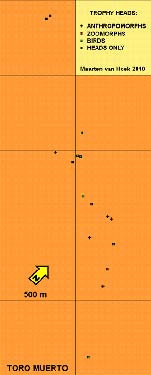

—¿Preguntas,
comentarios? escriba a: rupestreweb@yahoogroups.com—
Cómo citar este artículo:
Hoek, Maarten van. ‘Trophy’ heads in the rock art of the Majes Valley,
Perú: exploring their possible origin.
En Rupestreweb, http://www.rupestreweb.info/trophy.html
2010
BIBLIOGRAPHY
AHMED, A. 2009. Trophy heads reveal secrets about ancient South American civilization. Antiche Civiltà - Ancient Civilizations.
ÁLVAREZ ZEBALLOS P. J. 2009. Petroglifos de la Mezana, Pitis, Cantas y La Laja; Valle de Majes.
http://www.arqueologiadelperu.com.ar/majes/PAGINA%20DE%20INICIO2.html
BERENGUER J. R. 1999. The vanishing language of rock art in the Andes of Atacama. In: Rock art in the Andes of Capricorn. Museo Chileno de Arte Precolombino, Santiago de Chile.
BROWNE, D. & H. SILVERMAN & R. GARCIA. 1993. A Cache of 48 Nasca Trophy Heads from Cerro Carapo, Perú. Latin American Antiquity. 4(3): pp 274294.
CAMAPANA DELGADO, C. 2006. Alto de las Guitarras: las imagines cambiantes y el tiempo. Unpublished paper. Lima, Perú.
CHIURAZZI, R. 2006. Primera approximacion al estudio de pinturas rupestres de Palca, Yanahuanca, Palca. Paper presented at the 2nd National Symposium on Rock Art, Trujillo, Perú.
CASTILLO BENITES, D. S. 2006. Arte Rupestre en la Cuenca del Río Chicama. Ediciones SIAN, Arqueología / 4. Trujillo, Perú.
CORDONA ROSAS, A. 2002. Arqueología de Arequipa. De sus albores a los Incas. CIARQ, Arequipa, Perú.
DELGADO ALCARÓN, Y. 2006. El Gran Erarka; Vivencia Imborrable. Paper presented at the 2nd National Symposium on Rock Art, Trujillo, Perú.
DISSELHOFF, H. D. 1968. Oasenstädte und Zaubersteine im Land der Inka. Archäologische Forschungsreisen in Peru. Safari Verlag. Berlin.
DRAKOMAN. 2006. Internet web site no longer available.
DRAKOMAN. 2007. Internet web site no longer available.
ESCALANTE. J. M. n.d.: Tiwanaku. Guide. Cultural Patrimony of Humanity. Editoria Presencia.
HOSTNIG, R. 2003. Arte rupestre del Perú. Inventario Nacional. CONCYTEC, Lima, Perú.
ISLA CUADRADO, J. 2009. From hunters to regional lords: Funerary practices in Palpa, Peru. In: New Technologies for Archaeology: Multidisciplinary Investigations in Palpa and Nasca. Markus Reindel and Günther A. Wagner (Eds.). Springer Verlag, Berlin.
MOSTNY GLASER, G. & H. NIEMEYER FERNÁNDEZ, 1983 Arte Rupestre Chileno. Serie El Patrimonio Cultural Chileno. Colección Historia del Arte Chileno. Publicación del Departamento de Extensión Cultural del Ministerio de Educación.
NIEVES, A. C. 2007. Between the river and the pampa: a contextual approach to the rock art of the Nasca Valley (Grande River system), Department of Ica, Perú. The University of Texas at Austin, U.S.A.
NÚÑEZ JIMÉNEZ, A. 1986. Petroglifos del Perú. Panorama mundial del arte rupestre. 2da. Ed. PNUD-UNESCO – Proyecto Regional de Patrimonio Cultural y Desarrollo, La Habana.
PIMENTEL, V. 1986. Petroglifos en el Valle Medio y Bajo de Jequetepeque, Norte del Perú. Bonn, Alemania. Verlag C. H. Beck, München.
PROULX, D. A. 1994. Stylistic variation in proliferous Nasca pottery. University of Massachusetts. Originally published in: Andean Past, 4: 91-107.
PROULX, D. A. 1999. Nasca Headhunting and the Ritual Use of Trophy Heads. University of Massachusetts. Originally published in German in: Nasca: Geheimnisvolle Zeichen im Alten Perú. pp. 79-87. Edited by Judith Rickenbach. Museum um Rietberg, Zürich.
PROULX, D. A. 2007. An analysis of Nasca pottery from the department of Arequipa, Perú. Paper originally presented to the 19th Northeast Conference on Andean Archaeology and Ethnohistory Dartmouth College, 2000 [modified and expanded Oct. 2007].
RÍOS VALLADARES, P. D. 2006. Repertorio de personajes relacionados a la caza y manipulación de cabezas trofeo en la iconografía Paracas Tardío y Nasca Temprano. Arkeos, Revista Electrónica de Arqueología. Vol. 1. Nro. 2.
ROMERO GUEVARA, A. L. 1996. Enfrentamientos rituales en la Cultura Arica: Interpretación de un ícono rupestre. Chungara. Vol. 28, pp 115-132. Universidad de Tarapacá, Arica, Chile.
SILVERMAN, H. & D. PROULX. 2002. The Nasca. Blackwell Publishers. Oxford.
VALENZUELA, D., L. BRIONES & C. SANTORO. 2002. El arte rupestre en el contexto de la interaccion social del Periodo Tardio, en el Valle Lluta (Arica, Chile). Actas del 14 Congreso Nacional de Arqueologia Argentina.
VAN HOEK, M. 2003. The rock art of Toro Muerto, Perú. Rock Art Research. Volume 20-2. 151 - 170. Melbourne.
VAN HOEK, M. 2005. Biomorphs “playing a wind instrument” in Andean rock art. Rock Art Research. Volume 21-2. 23-34. Melbourne.
